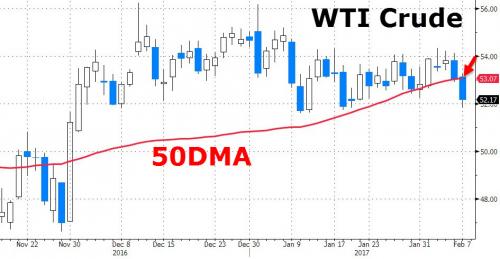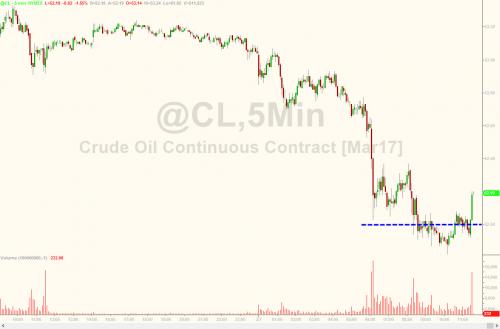Suggesting that the OPEC “production cut” gambit may soon backfire, on Tuesday the U.S. Energy Information Administration cut it’s 2017 world oil demand growth forecast by a fractional 10,000 barrels per day to 1.62 million bpd, and also cut its 2018 estimate by 50,000 bpd to 1.46 million bpd. At the same time, the EIA cut its U.S. crude output forecast for 2017 dractionally to 8.98mmbpd from its January 9 mmpd forecast – still 100,000 higher than 2016 – even as it aggressively boosted its 2018 US output forecast to 9.53 mmbpd from 9.30 mmbpd. If accurate, that would mark the highest US crude output since 1970, and indicate that US shale is indeed becoming a key global marginal oil producer.
“Global oil supply and demand is now expected to be largely in balance during 2017 as the gradual increase in world oil inventories that has occurred over the last few years comes to an end,” said Howard Gruenspecht, acting EIA administrator, in a statement.
While the EIA also forecast WTI would average $53.46 a barrel this year, up from the previous forecast for $52.50 and Brent at $54.54 this year, up from $53.50, the market’s kneejerk reaction was negative, with concerns about rising supply mounting, and as a result March West Texas Intermediate crude continued to trade lower, declining declined over 1%, to a 2-week low…

… dropping below its 50-day moving average, even as dollar gave up much of its intraday gains.

With CFTC reports showing that hedge fund net longs in crude are at all time highs, and conversely virtually all shorts have been blown out, the potential for a sharp reversal in WTI is on deck, with capitulatory selling possible should the declining trend continue. A key catalyst could be today’s API inventory report due at 4:30pm which over the past few weeks has shown a substantial increase in inventory, defying OPEC’s story about a market that is progressively shifting into equilibrium.













Leave A Comment